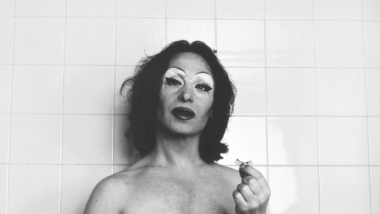
The photography archive of Humberto Rivas was already being conserved provisionally by the Arxiu Fotogràfic de Barcelona and will now definitively become part of the archive. It includes:
- 23,193 negatives, plaques and slides of different sizes, as well as contact sheets
- Six photomontage models
- 200 original sequences by the artist that represent the topics typifying his work (from well-known figures to still life works and urban landscapes)
- One set of documents
Biography of Humbert Rivas
Humberto Rivas was born in Buenos Aires in 1937, but his career is intimately linked with Barcelona, the city which gave him shelter in 1976 along with his companion, the artist María Helguera (in the image, in a photo from 1978), and his family, forced into exile by the Argentinian dictatorship.
Rivas created a first publicity photography studio at a time when the country was going through the transition and the photography scene was starting to experiment. In this context, the objective images of Humberto Rivas quickly found a place on the city scene and his portraits were very well accepted by the photographers of the time.
An account of the time, his work includes many landscapes (some of them, such as the Huellas series, show the imprint of the Spanish Civil war) and talks to us of absences and presences through these decadent and empty urban spaces.
He also produced a large number of portraits of famous people linked to Catalan politics and culture, as well as numerous photos of anonymous or directly marginal people, in images that talk to us of another Barcelona, beyond the more official and superficial Barcelona. In the case of his portrait of Violeta la Burra in 1978 (in the image), the photo became one of the author’s best-known works.
With a notable teaching side, Rivas was active at teaching centres in the city linked to photography, such as the Can Basté community centre, hence the square behind the building which today bears his name.
His presence in Barcelona contributed significantly to the renewal of photographic language, adopting an avant-garde lens to view reality without the need to strictly stick to documentary practice.
The artist won some important awards: from the National Photography Award in 1997 to the Visual Arts Award from Barcelona City Council (also in 1997) and the Gold Medal for Artistic Merit, awarded to him a few days after his death in 2009.
